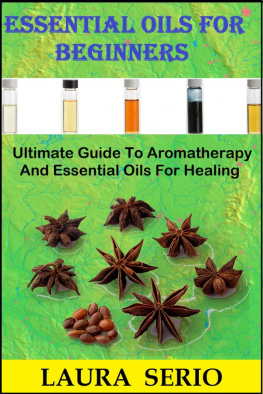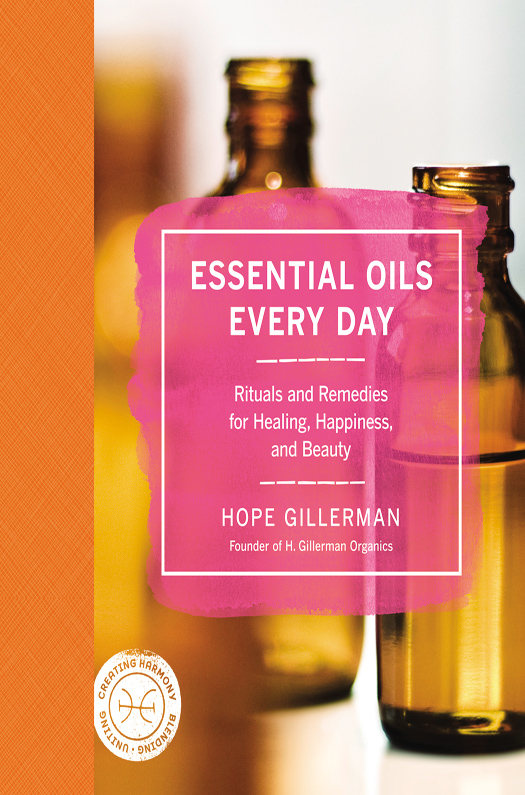FOR JOAN ARNOLD, WHO NUDGED ME ALONG THE PATH
WITH HER ELOQUENT WORDS AND HER BRILLIANT MIND. WHOSE
HEALING LOVE FOREVER CHANGED MY LIFE AND MY WORK.
CONTENTS
Guide
A nnie is a scent professional who writes about perfumes for beauty magazines. We first met at an industry event, where she introduced herself as a die-hard fragrance fanatic. She explained she never left the house without adorning herself with a fragrance from her huge collection. She scented her body, her clothes, her hair, even her friends homes, with the highly prized scents and candles she adored. Then she blurted out that her back was killing her!
Annie suffered from untreated chronic back pain, a result of spending her days in heels and at a desk. She also had pretty terrible allergies, which she treated with over-the-counter medications. I told her I specialized in helping people get rid of their back pain, even if they have had it for years, and I encouraged her to come for some therapeutic sessions in the Alexander Technique and aromatherapy. Annie was ready to sign up! But even though she loved scent, she explained she would be less receptive to incorporating essential oils into the sessions. When I asked why, she admitted she had always shunned essential oils, skeptical of their benefits and assuming their scents were crude compared to the masterworks of French perfumery she admired so much.
After a couple of sessions, Annies back started feeling better. She was elated. So I encouraged her again to try some of my oils for her allergies as well as her pain, and she agreed. We started slowly. I showed her how to use an oil to help clear her sinuses and alleviate the cough she had developed in response to the allergy-inducing chemicals in many of her beloved perfumes. After a few more sessions, her breathing improvedpain is so often exacerbated by shallow breathingand we moved on to working with a muscle-relaxing blend of oils to help further heal her back pain. With all her progress, Annie was still incredulous, saying her symptoms would normally come and go on their own, until I finally gave her an oil blend for mental clarity, stamina, and focus, which she loved.
Before she had experienced essential oils, Annie was addicted to caffeine, drinking five or more cups of coffee a day plus a few diet sodas. She told me that once she got her hands on my special focus blend, a mix of peppermint and lavandin essential oils to relieve tension headaches and improve mental clarity, that all changed. I kept finding that I didnt want my midafternoon coffees, she said. Soon I craved the peppermint sensation on the back of my neck more than my cup of joe. The essential oils were doing the job I thought the coffee was doing, only they were doing it better! Ive been down to one cup a day most days and I even skip coffee sometimes. But I never skip my essential oils. They get me going in the morning, for workouts, and help me focus when Im writing.
Once Annie experienced how well essential oils work, she was an instant devotee. Swearing me to secrecy, she confessed she was using oils in lieu of her daily dose of French parfum. I almost feel like a traitor to all of my perfumes! she whispered. I was overjoyed to see her transformation. Over the next year, I saw her shift to eating a better diet, using toxin-free beauty products, incorporating more exercise into her daily routine, and embracing a less crazy scheduleand having more fun! What I love about Annies story is how easily she moved from knowing nothing about essential oils, except misinformation and misunderstanding, to using them so fluidly she changed the course of her health and well-being.
The Story of Essential Oils
Annies exploration is what Essential Oils Every Day is all about. So many people simply havent experienced how useful these natural, healing essences can be. Essential oils are one of the most comprehensive tools of self-care in the world and one of our oldest forms of natural medicine.
The story of essential oils begins in the ancient Near EastMesopotamiajust over five thousand years ago. This world must have been aromatic heaven: women scented their hair with cedar-infused oil and the air was ripe with aromatic smoke from pine, spruce, juniper, and balsam incense, the rich balsam tones creating an aromatic terrainthe perfume of everyday life, rituals, ceremonies, and healing. Its no wonder then that the origin of the word perfume comes from the Latin per fumus, which means through smoke. Ancient priests and physicians believed that incenses essential-oil-laced smoke ascended up to the gods and gave them the power to call upon healing spirits during religious practices and medical treatments.
Without distillation, the process we use now to render essential oils from plant matter, ancient practitioners were limited in how they captured essential oils. The essences were locked in wood, bark, needles, berries, petals, leaves, and resins. To release an oil, the plant was either burned, as with smoldering incense, or soaked in animal fats or seed oils. The plant-oil mixture was heated slowly, in the sun, until the essential oil had leached into the fatty substance the plant had been soaking in. These scented oils were made into balms and healing ointments for overall health, perfume, and personal care as well as for religious and healing ceremonies. I revel in this vision of a world perfectly spiced for mind, body, and spirit. Those simple concoctions were the foundation of all our perfumes, cosmetics, and cleaning and herbal healing productsall that is scented can be traced back to these early balms and incense.
The next historical evolution in essential oils and the therapeutic use of aromatic plants occurred in India, as a part of ayurvedic medicine. A five-thousand-year-old healing system still practiced today, ayurveda is based on balancing ones vital energy (prana) according to body type (dosha) and staying in harmony with the environment through meditation, exercise, diet, and lifestyle. This many-limbed system also incorporates detoxifying massage with sesame and coconut oil (panchakarma) and essential oils (including anti-inflammatory turmeric, basil, and peppermint). The ayurvedic healing aesthetic, found in both incense and aromatic personal care oils, is so beautiful that we find it echoed in our favorite perfumes today. We can thank India for giving us sandalwood and vetiver, found in many mens colognes. Heady jasmine and vanilla are hidden in the complex fragrance of Chanel No. 5. Sandalwood and jasmine ground Guerlains Samsara, and my favorite, Hermss Calche, combines jasmine and citrus. I love knowing that the fragrances that capture our imaginations were originally designed to help our spirits ascend toward nirvana.
Moving forward to around 2600 BCE in Egypt, Imhotep, the designer of the first pyramid, acted as physician and priest, using essential oils in religious ceremonies, including mummification. In fact, when the first great tombs were excavatedincluding those of Pharaohs Tutankhamun and Queen Hatshepsuttraces of still-fragrant frankincense and myrrh were found in some of the vessels. These powerful resins are a mainstay of modern aromatherapy, used for skin care, to focus the mind, and for their strong decongestant and antifungal properties. In ancient Egypt, these substances were burned in large quantities at ceremonies, and they have become integral to spiritual practice, past and present.
Chinese herbal medicine and the use of aromatic herbs also had its origins around this time; historically, the development of Chinese medicine parallels Egyptian and ayurvedic medicine. One of the most important early Chinese medical texts is a materia medica on herbs attributed to the quasi-mythical emperor Shen Nung. In it, Shen Nung promoted the stimulating powers of ginseng; he was the first recorded person to do so. Though ginseng essential oil is too costly to extract commercially, if we did, it would make Red Bull and Starbucks unnecessary! Early Chinese healers are also responsible for introducing the beloved citrus essential oils that make us feel happy, refreshed, and calm. These are still favorite scents today. Just think of how we instinctively turn our heads to smell someone cutting open an orange, a lemon, or a lime nearby!










